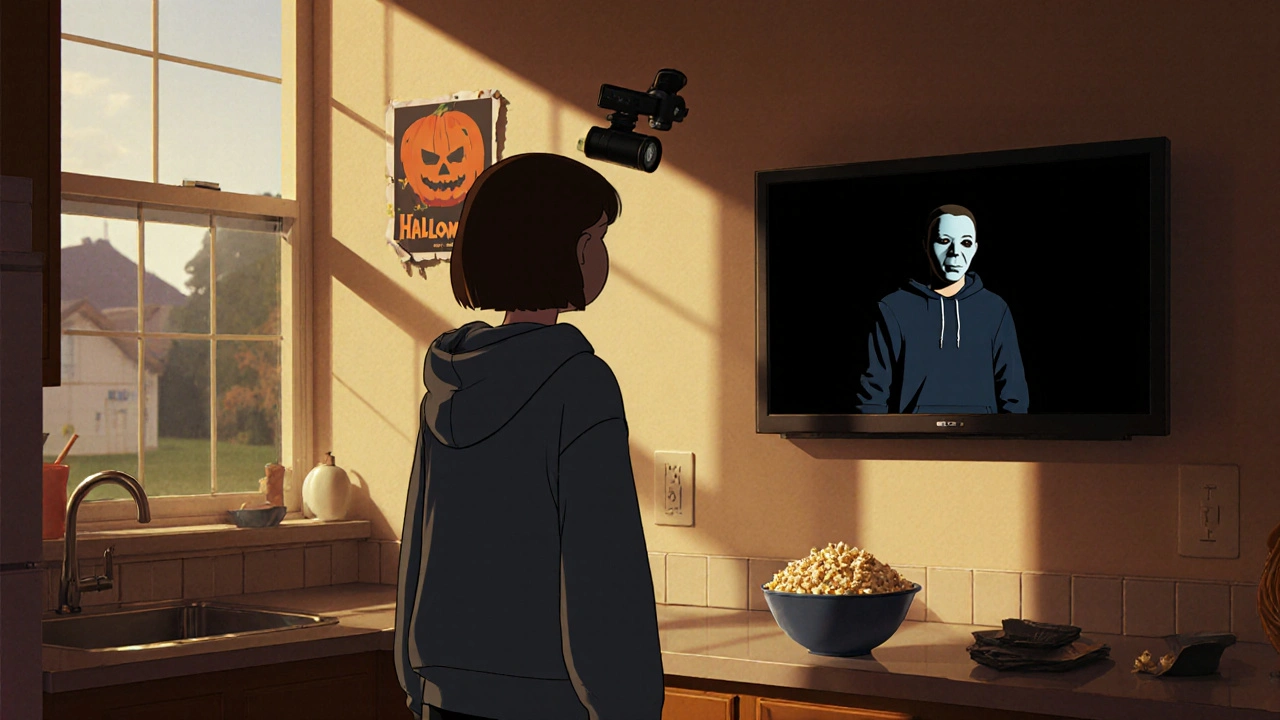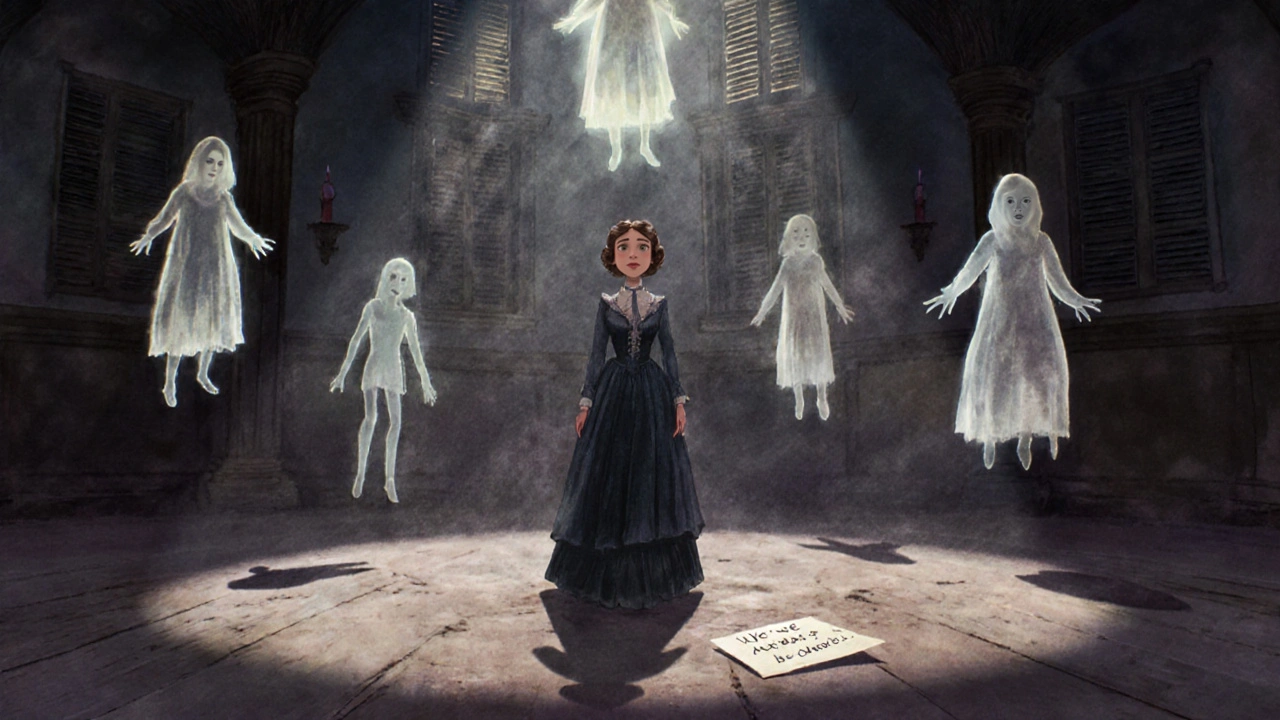The 1990s didn’t just give us grunge music and flip phones-it gave us some of the most influential horror movies ever made. This decade took the rules of the genre and ripped them apart. Slasher films got self-aware. Japanese ghost stories crept into Western homes. And instead of just jumping out with a mask, horror started whispering in your ear, making you question what’s real-and what’s just in your head.
What Made 1990s Horror Different?
Before the 90s, horror was mostly about monsters, gore, and cheap jump scares. Then came Scream in 1996, and everything changed. It didn’t just scare you-it made fun of how horror worked. Characters knew the rules. They talked about Friday the 13th and Halloween like they were watching a movie. And that was the point. The audience was in on the joke, but the killer wasn’t.
That self-awareness didn’t kill horror. It revived it. Studios realized people weren’t tired of the genre-they were tired of bad scripts. So writers started digging deeper. They mixed psychological tension with real fears: isolation, technology, family trauma. The monsters weren’t always supernatural. Sometimes, they were your neighbor. Or your dad. Or the voice on the other end of the phone.
Scream: The Slasher That Broke the Mold
Wes Craven’s Scream didn’t just revive the slasher genre-it redefined it. It took the formula: teens in a small town, a masked killer, a final girl-and turned it into a commentary on horror itself. The opening scene with Drew Barrymore? Still chilling. Not because of the blood, but because you thought she was the main character. And then she was gone. That’s how you unsettle an audience.
The film’s success wasn’t just about the kills. It was about the dialogue. The characters didn’t just scream-they debated horror movie logic. They argued over who the killer could be based on screen time and motive. It made viewers feel smart. Like they could solve the mystery. And that’s why it worked. You weren’t just watching a movie. You were playing along.
It also gave us Neve Campbell as Sidney Prescott, one of the most enduring final girls in horror history. She wasn’t perfect. She was scared, confused, and sometimes made bad choices. But she kept fighting. And that’s what made her real.
Ringu: The Japanese Horror That Went Global
While America was laughing at its own horror clichés, Japan was making something far more unsettling. Ringu (1998), directed by Hideo Nakata, didn’t have chainsaws or masked killers. It had a cursed videotape. Watch it, and you die in seven days. No explanation. No motive. Just silence, static, and a girl crawling out of a TV.
What made Ringu terrifying wasn’t the visuals-it was the dread. The slow buildup. The way the horror crept into everyday life. You didn’t need a haunted house. You just needed a VCR. And that’s why it spread. Western audiences had never seen horror this quiet, this patient. It didn’t need loud music or sudden screams. It just needed you to sit still. And wait.
It became a global phenomenon. The American remake, The Ring (2002), followed. But the original? Still better. The ending where Sadako’s hand reaches out? Still gives people nightmares. And the TV static? You’ll never be able to turn off a screen without glancing back.

The Others: When the Real Monster Is Inside
Not all horror needed a killer. Sometimes, the fear came from what you couldn’t see. The Others (2001) came right at the end of the decade, but it’s pure 90s horror DNA. Nicole Kidman plays a mother living in a dark, isolated mansion with her two photosensitive children. Ghosts are rumored to be in the house. But are they?
The film’s twist isn’t just clever-it’s devastating. The real horror isn’t the ghosts. It’s the guilt. The denial. The fact that the characters have been dead all along, and they just didn’t realize it. The movie doesn’t show you the monster. It makes you realize you were the monster all along.
It’s slow. It’s quiet. It’s got almost no jump scares. But it lingers. You’ll find yourself thinking about it weeks later. That’s the mark of great horror. Not how much it scares you in the moment-but how much it changes the way you look at your own house, your own family, your own silence.
Jeepers Creepers: The Folk Horror That Came Out of Nowhere
2001’s Jeepers Creepers feels like it belongs in the 90s, even if it technically came after. It’s the story of two siblings driving through rural America who pick up a hitchhiker with a disturbing smile. Then they notice the abandoned church. The blood on the walls. The thing that wakes up every 23 years to feed.
It’s not a deep movie. But it’s effective. The Creeper isn’t just a monster-he’s a myth. A local legend made flesh. And the film treats him like a force of nature. You can’t reason with him. You can’t outsmart him. You just have to run.
It tapped into a fear that’s older than horror movies: the fear of the unknown in the middle of nowhere. No cell service. No help. Just a road that stretches forever, and something that’s been waiting for you.

Session 9: The Real Horror Is the Place
If you’ve never seen Session 9 (2001), you’re missing one of the most underrated horror films of the era. Set in an abandoned mental hospital, it follows a group of asbestos removers who start to lose their minds. The building itself seems to be watching them. Voices echo. Notes appear. People vanish.
The film uses real locations-the Danvers State Hospital-where patients were once treated with brutal, outdated methods. The history bleeds into the story. The horror isn’t a ghost. It’s the weight of what happened there. The guilt. The silence. The way trauma stays in walls.
It’s not flashy. No gore. No monsters. Just a slow unraveling. And by the end, you’re not sure if the characters are being haunted-or if they’re just breaking.
Why These Movies Still Matter
The horror movies of the 90s didn’t just entertain. They reflected the anxieties of the time. The rise of technology. The breakdown of family. The fear of being watched, even when you’re alone. These films didn’t need CGI. They didn’t need big budgets. They just needed to make you feel something.
Today, horror is bigger than ever. But most of it feels hollow. Too many jump scares. Too many sequels. Too many remakes that forget why the originals scared people in the first place.
The 90s taught us that the best horror doesn’t come from what’s on screen. It comes from what’s in your head after the credits roll.
What to Watch Next
If you’ve seen the big names, here are a few under-the-radar 90s horror gems you might have missed:
- Dark Water (2002, but rooted in 90s Japanese horror style)
- The Wailing (2016, but the tone is pure 90s dread)
- Lake Mungo (2008, found footage before it became a trend)
- Teeth (2007, dark feminist horror with a killer twist)
- The Wicker Man (2006, a flawed remake, but the original 1973 version is a 70s classic that influenced 90s folk horror)
Don’t just rewatch Scream and Ringu. Dig deeper. Find the quiet ones. The ones that don’t scream. The ones that just… watch.

